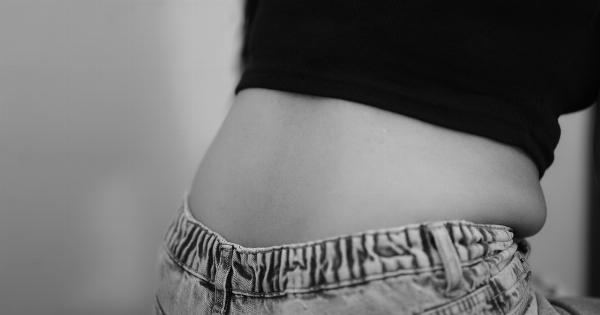Urinary incontinence is a prevalent condition among both men and women, affecting millions of people worldwide. It refers to the involuntary leakage of urine, leading to varying degrees of inconvenience and embarrassment.
While urinary incontinence can occur due to different reasons, it is essential to understand its various causes to determine the appropriate treatment options. In this article, we will explore the common causes of urinary incontinence and discuss potential treatment solutions.
1. Age-related Changes
As people age, the muscles and tissues in the urinary tract tend to weaken, leading to urinary incontinence. The bladder loses elasticity, resulting in reduced capacity to hold urine for an extended period.
Additionally, weakened pelvic floor muscles can contribute to stress incontinence, where leakage occurs during physical activities or even by simply sneezing or coughing.
2. Pregnancy and Childbirth
Pregnancy and childbirth put significant strain on a woman’s pelvic floor muscles, which can weaken or damage them. This weakening can lead to stress incontinence, where even mild pressure on the bladder can cause urine leakage.
Additionally, hormonal changes during pregnancy decrease bladder control, further contributing to urinary incontinence.
3. Menopause
During menopause, women experience a decrease in estrogen levels, which can cause various changes in the urinary tract. The decline in estrogen can weaken the urethral tissues, making them less effective in controlling the flow of urine.
This hormonal imbalance can significantly contribute to both stress and urge incontinence.
4. Prostate Problems
In men, prostate issues such as an enlarged prostate or prostate surgery can cause urinary incontinence. These conditions can interfere with the normal functioning of the bladder and urethra, leading to difficulties in controlling urine flow.
5. Neurological Disorders
Neurological disorders such as multiple sclerosis, Parkinson’s disease, and stroke can affect the nerves that control bladder function.
These conditions disrupt the communication between the brain and the bladder, resulting in a loss of control over urination.
6. Urinary Tract Infections
Urinary tract infections (UTIs) can cause temporary urinary incontinence, particularly in older adults. UTIs irritate the bladder, resulting in a sudden and strong urge to urinate, often leading to leakage.
7. Medications
Certain medications, such as diuretics, sedatives, and muscle relaxants, can interfere with bladder control, leading to urinary incontinence.
It is crucial to discuss any potential side effects of medications with a healthcare professional to find alternative options if urinary incontinence occurs.
8. Obesity
Excess weight and obesity can contribute to urinary incontinence due to increased pressure on the bladder and pelvic floor muscles. The additional weight can weaken the muscles that control urine flow, leading to leakage.
9. Chronic Coughing
Chronic coughing, often associated with conditions like asthma and bronchitis, can put significant strain on the pelvic floor muscles. Over time, this strain can lead to stress incontinence, where leakage occurs during coughing episodes.
10. Anatomic Abnormalities
Sometimes, structural abnormalities in the urinary tract, such as a bladder diverticulum or a urethral stricture, can be the underlying cause of urinary incontinence.
These abnormalities can interfere with normal urine storage and release mechanisms, resulting in leakage.
Treatment Options for Urinary Incontinence
While the causes of urinary incontinence can vary, multiple treatment options are available to manage and alleviate the symptoms. The most appropriate treatment depends on the underlying cause and individual circumstances.
Some common treatment approaches include:.
1. Lifestyle Changes
In many cases, simple lifestyle modifications can significantly improve urinary incontinence symptoms. These may include maintaining a healthy weight, avoiding bladder irritants such as caffeine and alcohol, and practicing pelvic floor exercises.
2. Medications
Several medications are available to treat urinary incontinence, including those aimed at relaxing the bladder muscles or reducing bladder contractions.
However, it is crucial to consult with a healthcare professional to determine the most suitable medication and potential side effects.
3. Pelvic Floor Exercises
Also known as Kegel exercises, pelvic floor exercises can strengthen the muscles that support bladder control. Regular practice of these exercises can improve bladder control and reduce urinary incontinence episodes.
4. Bladder Training
Bladder training involves gradually increasing the time interval between bathroom visits to train the bladder to hold urine for longer periods. This technique can help improve bladder control and reduce the frequency of urinary incontinence.
5. Medical Devices
In some cases, medical devices such as a pessary or urethral insert can be used to support the bladder or block urine leakage. These devices should be used under the guidance of a healthcare professional.
6. Surgery
Surgical interventions are typically reserved for severe or persistent cases of urinary incontinence.
Different surgical procedures aim to restore bladder control, including bladder neck suspension, sling procedures, and artificial urinary sphincter implantation.
7. Nerve Stimulation
Nerve stimulation therapies, such as sacral nerve stimulation or posterior tibial nerve stimulation, can help regulate bladder function by modulating the nerves controlling bladder activity.
These therapies are non-invasive and can provide relief for some individuals.
Conclusion
Urinary incontinence can significantly impact an individual’s quality of life, but it is important to remember that effective treatment options are available.
By understanding the various causes of urinary incontinence, individuals can work with healthcare professionals to identify the most suitable treatment plan. Whether through lifestyle changes, medication, exercises, or surgical interventions, managing urinary incontinence is possible and can greatly improve one’s well-being.





























